Production of high-concentration n-caproic acid from lactate through fermentation using a newly isolated Ruminococcaceae bacterium CPB6
- PMID: 28439295
- PMCID: PMC5399333
- DOI: 10.1186/s13068-017-0788-y
Production of high-concentration n-caproic acid from lactate through fermentation using a newly isolated Ruminococcaceae bacterium CPB6
Abstract
Background: n-Caproic acid (CA), as a medium-chain carboxylic acid, is a valuable chemical feedstock for various industrial applications. The fermentative production of CA from renewable carbon sources has attracted a lot of attentions. Lactate is a significant intermediate waste in the anaerobic breakdown of carbohydrates that comprise 18-70% of the chemical oxygen demand (COD) in municipal and some industrial wastewaters. Recently, researchers (including our own group) reported the CA production using lactate as electron donor with newly identified microbiome systems. However, within such processes, it was hard to determine whether the CA production was completed by a single strain or by the co-metabolism of different microorganisms.
Results: Here, we report the CA production using lactate as electron donor using the strain CPB6, which we isolated from a microbiome for CA production as described previously. Strain CPB6 is affiliated with Clostridium cluster IV of the family of Ruminococcaceae based on 16S rRNA gene sequence analysis. The strain prefers acidic initial pH condition (pH 5.0-6.5), and the temperature ranging from 30 to 40 °C for CA production. In a fed-batch fermentation with non-sterilized lactate-containing organic wastewater as feedstock, strain CPB6 produced 16.6 g/L CA (from 45.1 g/L lactate) with a maximum productivity of 5.29 g/L/day. Enzyme assays with crude cell extract showed that CPB6 can metabolize acetate and butyryl-CoA to produce n-butyric acid, and acetate/n-butyrate and caproyl-CoA to produce CA, respectively.
Conclusion: This study demonstrated that high concentration of CA production can be obtained by a newly isolated pure culture CPB6. This strain can be employed as a powerful workhorse for high-efficient CA recovery from lactate-containing waste streams. Our preliminary investigation suggested that the CA production from lactate in strain CPB6 might be via the chain elongation pathway of the reverse β-oxidation; the detailed mechanism, however, warrants further investigation using various molecular microbiology techniques.
Keywords: Caproic acid; Chain elongation; Hexanoate; Lactate; Organic waste; Ruminococcaceae bacterium.
Figures
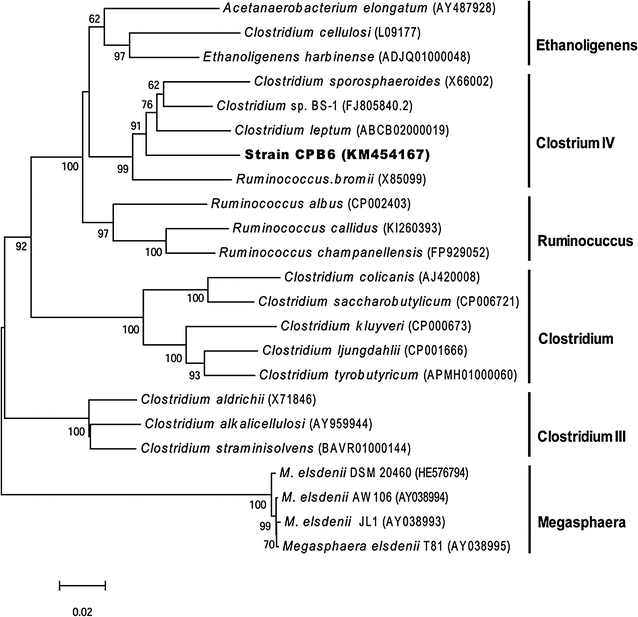
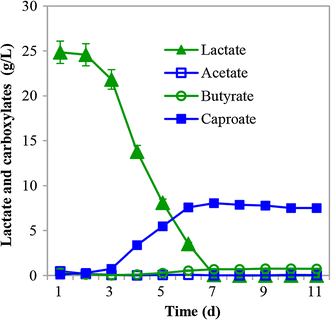

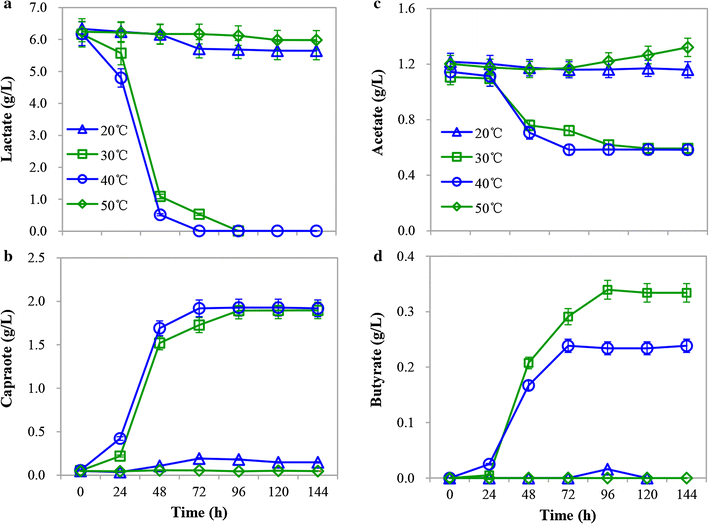
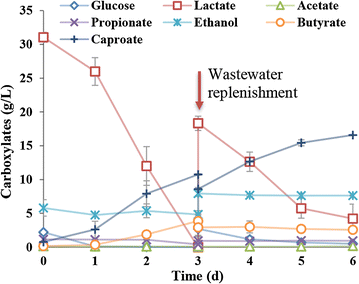

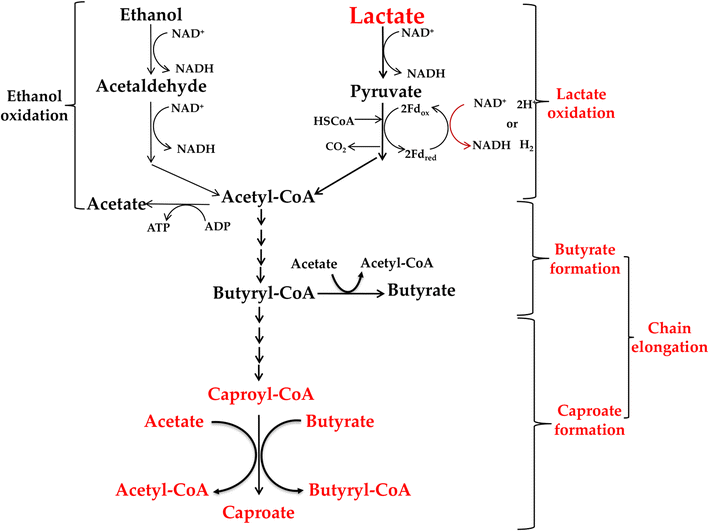
References
-
- Angenent LT, Richter H, Buckel W, Spirito CM, Steinbusch KJJ, Plugge CM, Strik DPBTB, Grootscholten TIM, Buisman CJN, Hamelers HVM. Chain elongation with reactor microbiomes: open-culture biotechnology to produce biochemicals. Environ Sci Technol. 2016;50:2796–2810. doi: 10.1021/acs.est.5b04847. - DOI - PubMed
-
- Seedorf H, Fricke WF, Veith B, Brüggemann H, Liesegang H, Strittmatter A, Miethke M, Buckel W, Hinderberger J, Li F, Hagemeier C, Thauer RK, Gottschalk G. The genome of Clostridium kluyveri, a strict anaerobe with unique metabolic features. Proc Natl Acad Sci. 2008;105:2128–2133. doi: 10.1073/pnas.0711093105. - DOI - PMC - PubMed
LinkOut - more resources
Full Text Sources
Other Literature Sources
Research Materials

